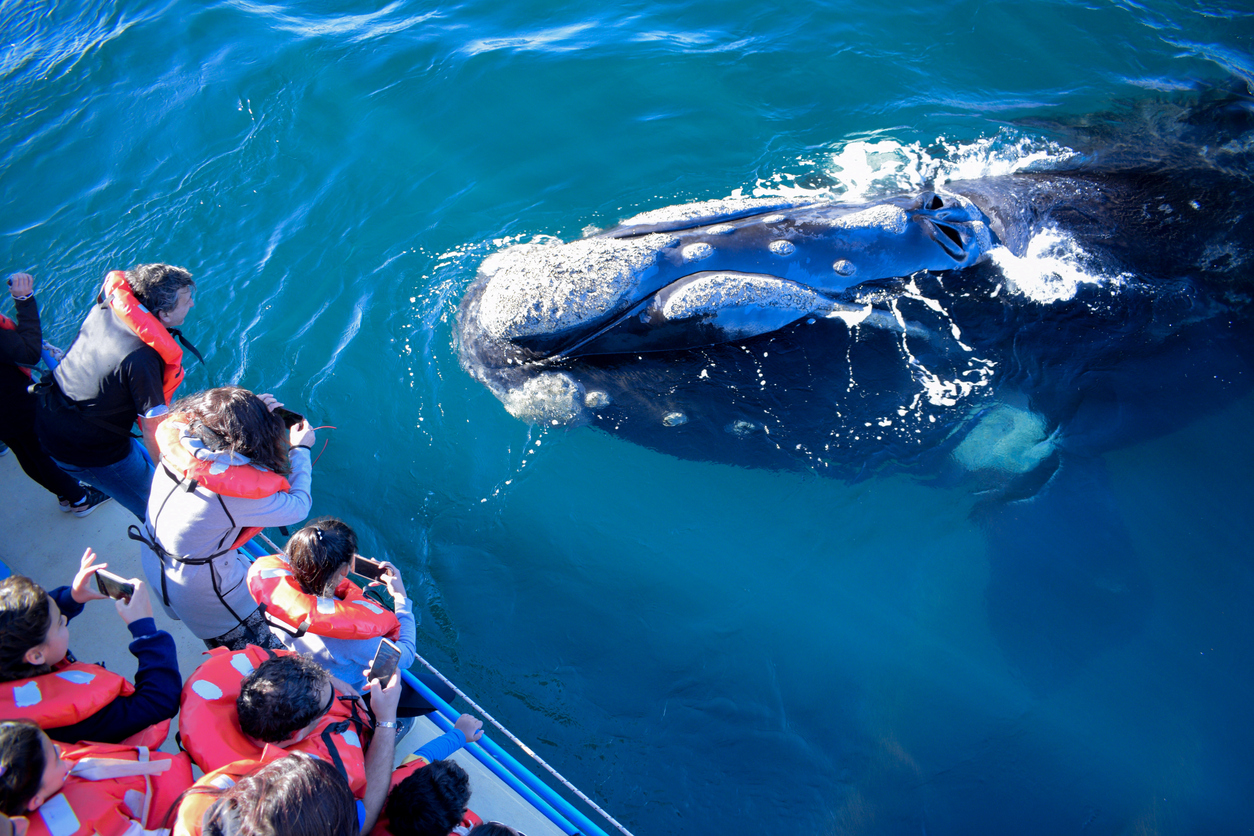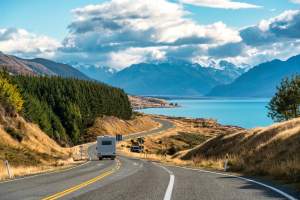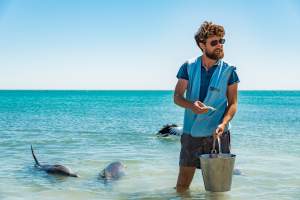
There are trips that entertain you, trips that educate you, and then there are those rare moments that shift something inside you. Whale watching in Patagonia isn’t just an excursion — it’s a kind of reckoning. A front-row seat to nature’s scale, silence, and unfiltered majesty. It doesn’t matter how many documentaries you’ve seen or how poetic you think you are — the first time a southern right whale surfaces beside your boat and exhales, you go quiet. And you stay quiet.
This isn’t commercial wildlife viewing with canned narration and a guaranteed selfie. It’s something older. Slower. Raw. Patagonia doesn’t perform for you. The whales don’t pose. But if you show up at the right time, with the right amount of patience and humility, it might just be one of the most powerful travel experiences of your life.
Here’s what it’s really like to go whale watching in Patagonia — what to expect, what it feels like, and how to do it right.
First: Where This Actually Happens
Patagonia is massive, stretching across southern Chile and Argentina — and while it’s all rich with nature, whale encounters concentrate in specific coastal regions.
The best-known spot: Peninsula Valdés, Argentina.
Located along the Atlantic coast of northern Patagonia, this UNESCO World Heritage Site is one of the most important breeding grounds for southern right whales in the world. Between June and December, hundreds of these massive creatures arrive to mate, give birth, and nurse their young in the protected waters of Golfo Nuevo and Golfo San José.
Other sightings can happen along the coastlines of Puerto Madryn, Puerto Pirámides, and farther south near Tierra del Fuego — where orcas and humpbacks occasionally make dramatic appearances — but Peninsula Valdés remains the crown jewel.
When to Go
Timing is everything. The whale watching season in this region runs from June through early December, but your experience will vary depending on when you go:
- June–August: Best for spotting large numbers of whales, including nursing mothers with calves.
- September–October: Mating season; whales become more active and visible.
- November–early December: Calves are stronger and more playful, and boat traffic tapers off.
Later in the season also means milder weather — this is Patagonia, after all, and winter here pulls no punches.
What You Expect
You book the tour. You imagine dramatic breaches. A calm boat. Crystal-clear water. A guide with perfect English narrating poetic facts about migration patterns and echolocation. A whale gently surfacing as the sun dips behind you, everyone tearing up.
And yes — sometimes you get close.
But most of the time? It’s different. Quieter. Colder. Slower.
And better for it.
The Reality
You show up early, layered up against the wind. The town of Puerto Pirámides is small — more windblown outpost than tourist town. The boat is sturdy but minimal. You board with 10–30 others, depending on the size of the craft. The guide gives a quick safety talk, then you head out into the bay.
At first, there’s nothing. Just cold air, wind, and sea.
Then someone sees it — a dark, barnacle-scarred shape just below the surface. A blow. A tail. A turn.
And everything changes.
You stop thinking. Stop moving. You just watch.
Because seeing a whale isn’t like seeing any other animal. It’s not a zoo moment. It’s not a photo op. It’s a presence. You feel it in your bones. The sheer mass, the unhurried grace, the sound of the blowhole erupting like a cannon in the stillness. It doesn’t feel like you’re watching nature — it feels like nature is watching you.
What You Might See
- Southern Right Whales – Up to 55 feet long, with rough patches of skin (callosities) and calm, predictable surface behavior. They come close — sometimes right next to the boat.
- Orcas (Killer Whales) – Rare, but dramatic. Known for intentionally beaching themselves in Patagonia to snatch sea lion pups — a behavior seen almost nowhere else.
- Humpbacks – Less common near Valdés, but more likely off the coast of southern Chile and Tierra del Fuego.
- Dolphins and sea lions – Often show up too, chasing fish or playing in the wake.
Every trip is different. Some days, you see dozens. Other days, you see one — or none. There are no guarantees.
But that’s part of what makes it real.
The Emotional Impact
No one talks much on the ride back. After seeing a creature the size of a bus glide silently past you, your brain kind of short-circuits. You feel small — but not in a bad way. Small in the right way. In the honest way.
There’s also something deeply moving about seeing mothers with calves. The way they nudge, surface together, rest near the boat. You start seeing intelligence. Patience. Maybe even affection. It’s hard to watch and not feel connected to something much bigger than yourself.
Land-Based Whale Watching (Yes, It’s a Thing)
Here’s what most travelers miss: you don’t need a boat to see whales in Patagonia.
Along Punta Flecha and the beaches of El Doradillo, just outside Puerto Madryn, you can sometimes see southern right whales within 20–30 meters of the shoreline. No ticket. No tour. Just you, a beach, and a pair of binoculars.
This is especially common in July through September, when mothers bring their calves close to the calm, shallow shores. Locals often pack a thermos and watch them for hours.
What to Bring
- Warm, windproof layers – Patagonia’s coastal winds don’t care what season it is.
- Binoculars – Even on a boat, they help spot and appreciate distant activity.
- Waterproof bag – Sea spray is real.
- Sunscreen and lip balm – The sun reflects off the water even in winter.
- Motion sickness meds – Just in case.
- A quiet mind – You won’t need much else.
Doing It Right (Ethically and Responsibly)
Patagonia has strict conservation laws around whale watching. Stick to licensed, small-scale operators who follow approach-distance rules and don’t chase or corral the animals.
Avoid “bargain” or unregulated tours. They often cut corners — and disturb the wildlife.
And don’t expect the whales to perform. The best moments come when you stop looking for them.
Whale watching in Patagonia doesn’t hit you with spectacle. It lingers. It whispers. It slows you down and reminds you that some of the most powerful experiences on Earth happen in silence.
You don’t need to be a marine biologist to feel it. You just need to show up. Bundle up. Be still.
And let the moment find you.
Because when a creature that outweighs your boat by twenty tons surfaces beside you — not out of fear, but out of casual curiosity — you understand something that’s hard to put into words:
We are guests here. And some guests are lucky enough to be invited closer.







